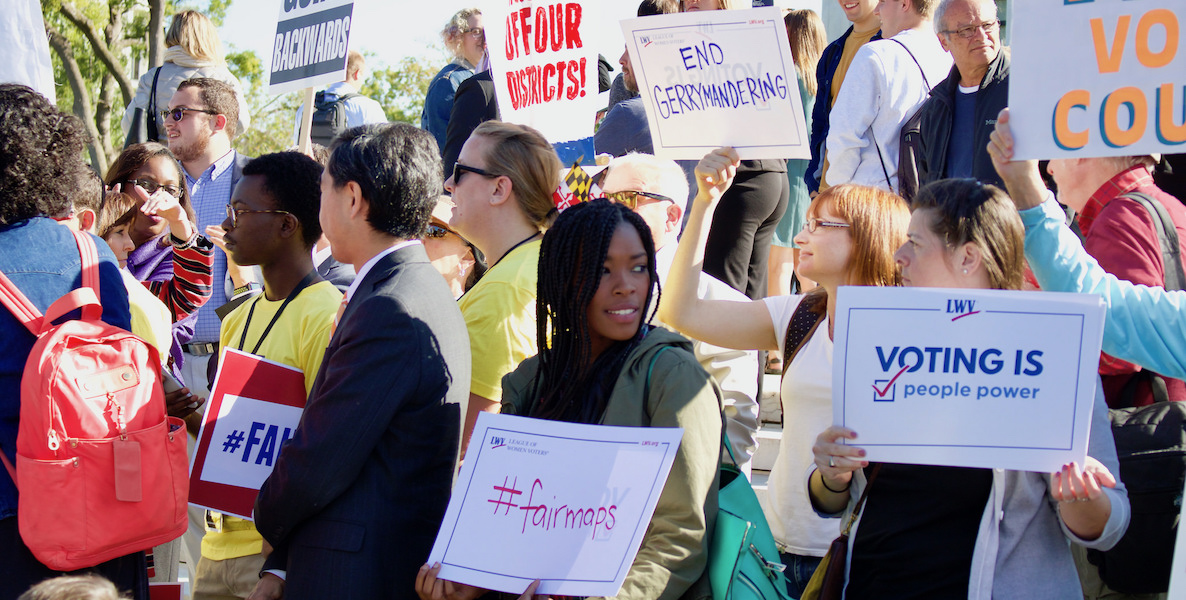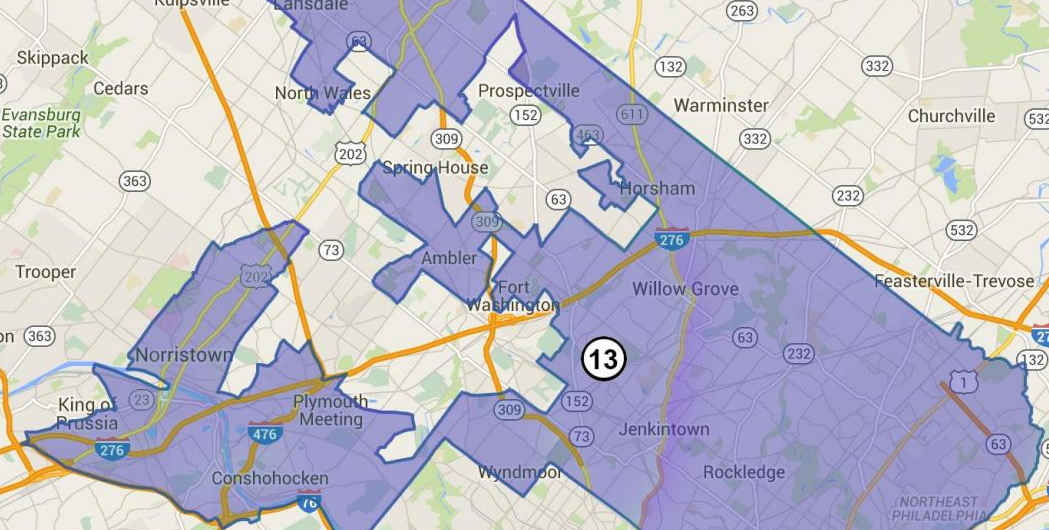It’s the quintessential “inside baseball” game among political aficionados: decennial reapportionment of legislative districts.
The game itself is pretty simple to describe. A political party—be it Republicans or Democrats—gains control of a state legislature at the beginning of a new decade. Ideally they gain control of all three branches of government so no pesky spoilsports—such as governors—try to ruin the game.
This is a game that requires no athletic ability at all, but it does require the fertile imagination and plodding persistence to turn out election district maps that maximize the congressional and state legislative seats your party will win while minimizing the seats of the opposition party.
Still, some time-tested schemes are used to achieve this, including so-called “packing” and “cracking.” The first packs the voters of one party together; the second spreads them apart among districts unwinnable by the minority party. In recent decades, sophisticated technology driven software has reduced the gerrymander to a mathematical science.
Better known as “gerrymandering,” the process itself was named after an 1812 Massachusetts governor, one Elbridge Gerry. Gerry presided over an early reapportionment so blatantly unfair, one of the districts was said to resemble a salamander—hence the portmanteau word “gerrymander.”
Gerrymandering waxes and wanes as an issue in the United States, pushing itself into public awareness toward the beginning of each new decade, and then declining in public interest until the next decennial census approaches, when it begins all over again.
Recently, it was resurrected as a national issue when the Supreme Court agreed in Gill v. Whitford to review a lower court federal ruling finding Wisconsin’s 2011 reapportionment of its legislative districts unconstitutional due to extreme gerrymandering.
![]()
Coincidentally, a challenge to the Pennsylvania reapportionment of the state’s congressional districts in 2011 is now working its way through state courts with the Commonwealth Court hearing challenges to the constitutionality of the 2011 map.
Pennsylvania is considered to be one of the 10 or so most gerrymandered states in the union along with such states as Ohio, Maryland, Texas and North Carolina (Pennsylvania now has elected 13 Republicans and 5 Democrats to Congress while Democrats have a registration edge of some 800, 000 active Democrats).
Gerrymandering is now eroding the foundation of our two party system by threatening to end competitive elections. Equally important—blatant gerrymandering has deprived millions of voters from having any meaningful influence on the political process
The significance of the Supreme court hearing the Wisconsin case cannot be exaggerated. Heretofore, the justices have historically resisted hearing cases considered as “political” bearing on the separation of powers doctrine enshrined in the Constitution. These issues have not been deemed to be “justiciable”, meaning they are not appropriate within the court’s jurisdiction.
More pointedly, the court wants to avoid the perception that it picks electoral winners and losers for partisan advantage. The last political redistricting case that did get a hearing was the Pennsylvania case Vieth v. Jubelirer challenging the constitutionality of the state’s 2001 reapportionment. In that case, the court held against the plaintiffs finding that there was no reasonable standard to judge where extreme gerrymandering had occurred.
So, what has changed?
One huge difference has been a proliferation of social science metrics that claim they can measure extreme gerrymandering. These include such techniques as the “efficiency gap” measurement, the “median-mean” ratio and others. If the justices find any of these proposed metrics capable of measuring extreme gerrymandering, the issue probably becomes justiciable, and the court may well find egregious instances of gerrymandering to be unconstitutional.
But a second and probably more important change has happened since the Pennsylvania case, a change that has less to do with law and its standards and much to do with democracy, the right to vote and the political dysfunction seemingly pervading the nation.
Gerrymandering is now eroding the foundation of our two party system by threatening to end competitive elections. Equally important—blatant gerrymandering has deprived millions of voters from having any meaningful influence on the political process.
Only about 10 percent of congressional house seats are now considered competitive, meaning either party might win them. This alone has led to increasingly “safe” and isolated incumbents unwilling or unable to bring accountability to government.
Importantly, this is not a partisan problem. Both Democratic and Republican state legislatures share blame. Republicans played the gerrymander game more in the 2010’s but Democrats did so in earlier decades.
Decade after decade of partisan redistricting has helped immeasurably to increase political conflict while undermining faith in public officials. Institutions seem incapable of even simple consensus while public confidence in government continues to plumb new lows. Political dysfunction, polarization and public outrage increasingly characterize the country.
Evidence for the growing public contempt is appallingly abundant. Only some 16 percent of the public approve of the job Congress is doing—while a minuscule 30 percent believe the country is “heading in the right direction.”
![]()
Importantly, this is not a partisan problem. Both Democratic and Republican state legislatures share blame. Republicans played the gerrymander game more in the 2010’s but Democrats did so in earlier decades. Even now both Republican and Democratic legislatures are planning the next reapportionment in 2021, doing their best to gerrymander all competitive districts out of existence.
We have now reached a point where only the Supreme Court can stop the madness that is weakening our democracy, destroying our unity and making a mockery of voting. The extreme partisan redistricting produced by gerrymandering is wrong, it is doing deep and sustained damage to American democracy, and it must stop.
Madonna is professor of Public Affairs at Franklin & Marshall College, and Young is a speaker, pollster, author, and was professor of Politics and Public Affairs at Penn State University. They can be reached, respectively, at [email protected] and [email protected].
Header Photo: League of Women Voters via Flickr




